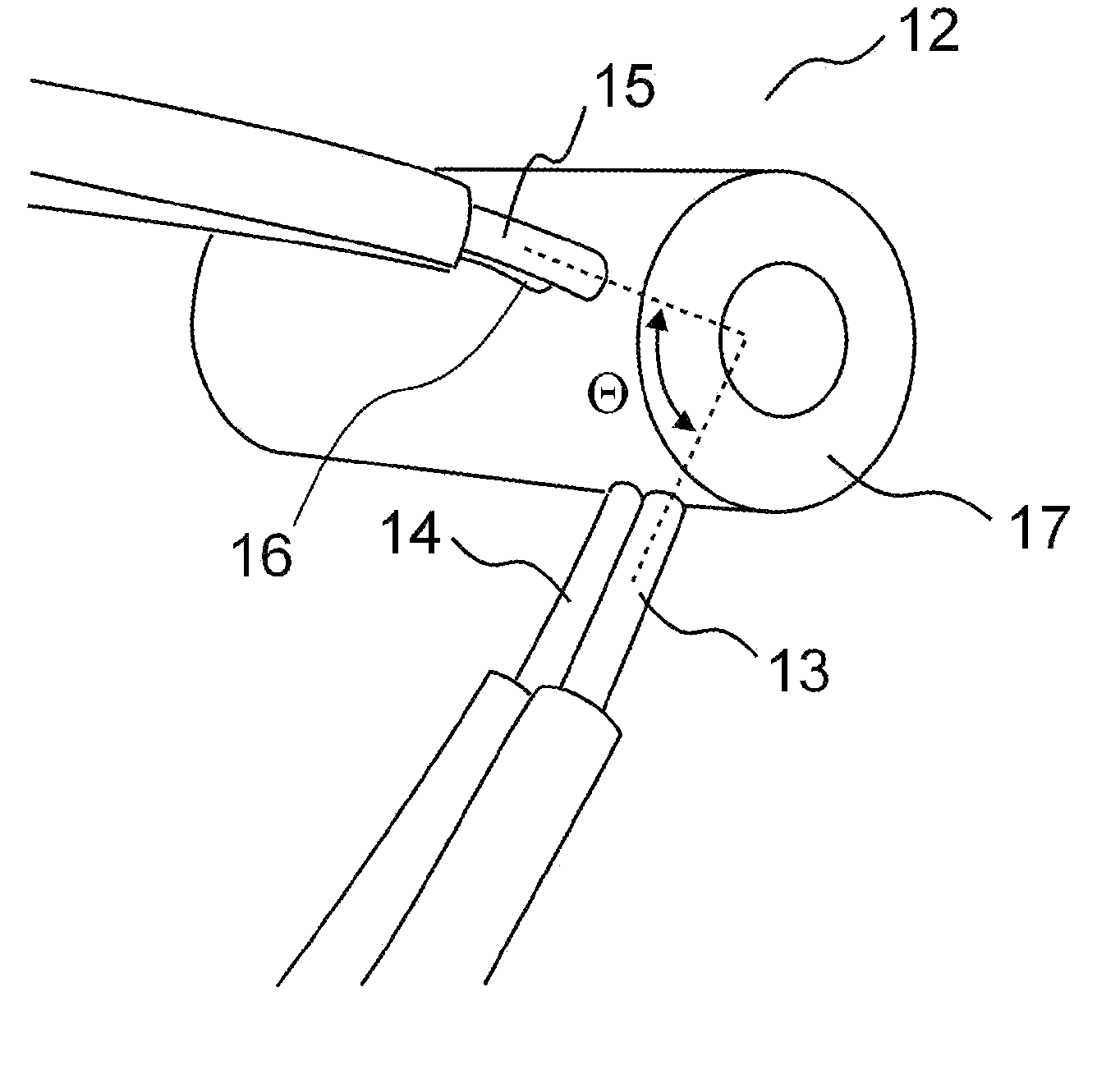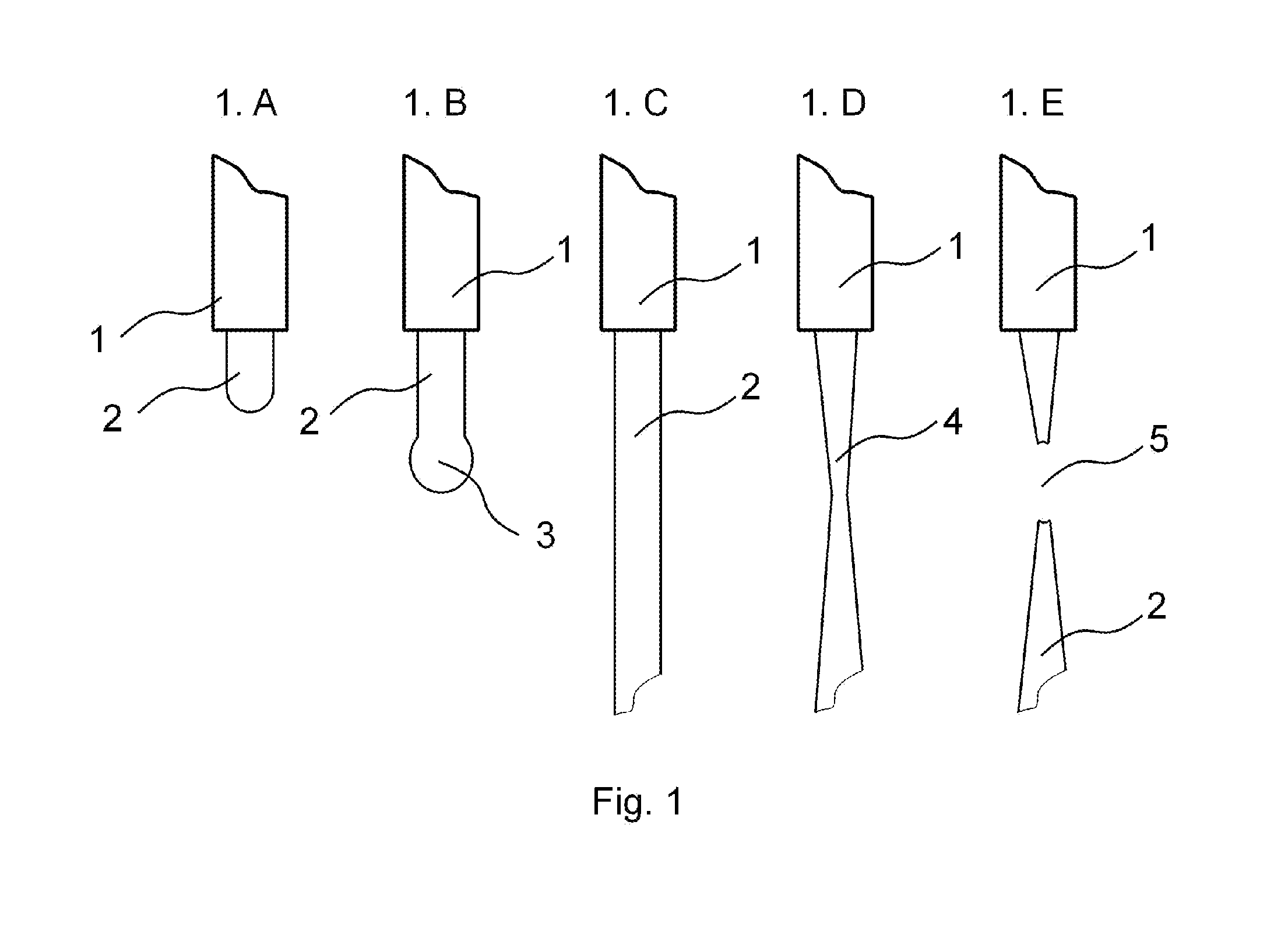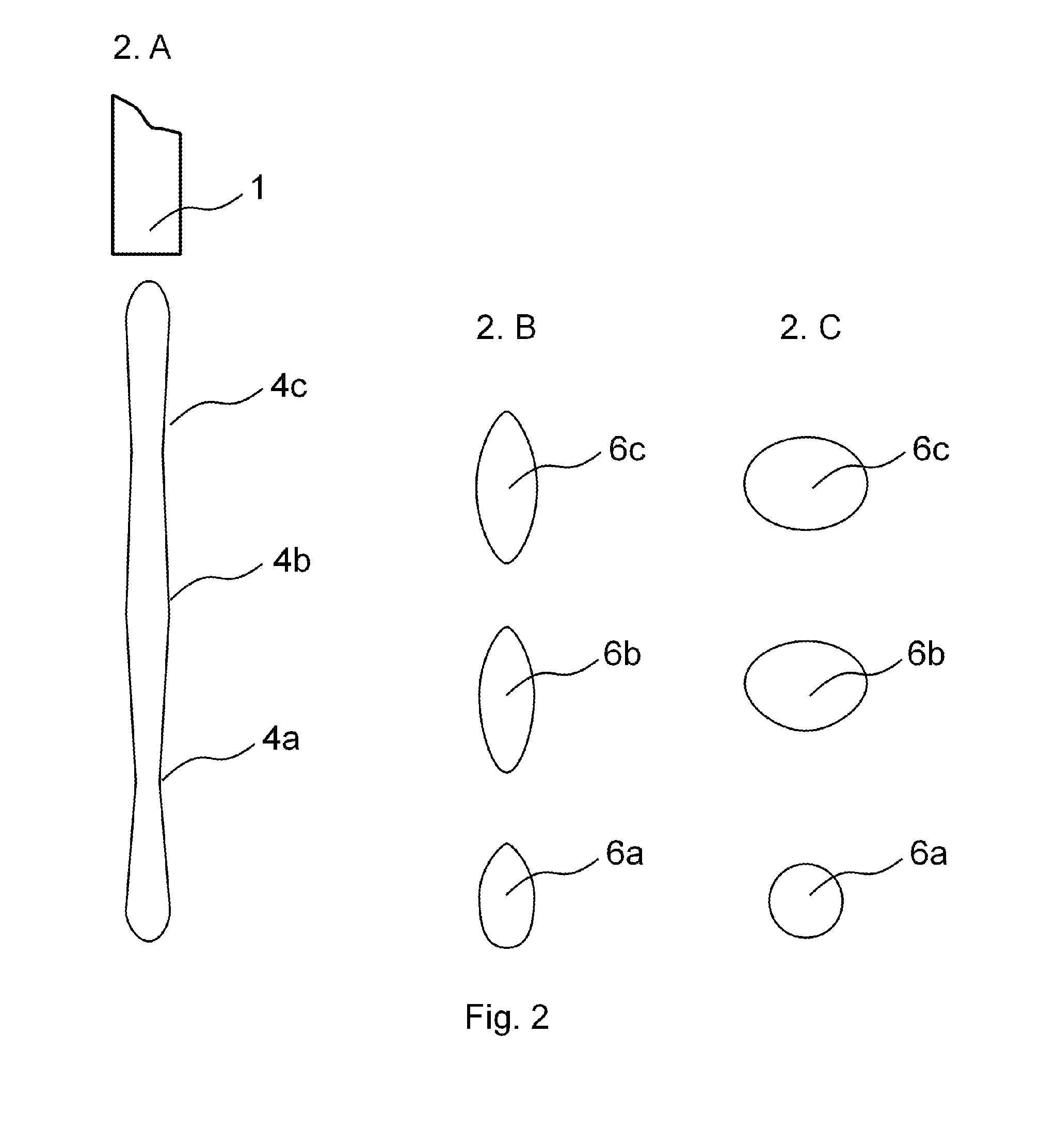Apparatus and method for monitoring and measurement of droplets
a technology of droplet monitoring and measuring apparatus, which is applied in the direction of analytical using chemical indicators, laboratory glassware, instruments, etc., can solve the problems of inability to monitor the visual arrival of a tiny drop on a destination substrate, difficulty in consistent dispensing, and incorrect diagnosis
- Summary
- Abstract
- Description
- Claims
- Application Information
AI Technical Summary
Benefits of technology
Problems solved by technology
Method used
Image
Examples
first embodiment
[0143]the method is based on measurement of the jet length lj. It is explained with reference to FIG. 25. At a relatively short distance away from the nozzle the jet in the typical volume range of interest to the field of the invention can be represented as a cylindrical segment. The diameter of the jet 2R0 (twice the radius) is typically essentially equivalent to the inner diameter (2r) (twice the radius) of the nozzle and it is uniform throughout the length of the jet segment. We shall explain later what defines the difference between the diameter of the jet 2R0 and the inner diameter of the nozzle 2r. Then the cross-sectional area of the jet is πR02. Therefore the volume of the jet is substantially equal to Vj=ljπR02. The length of the jet segment lj can be measured from the signal at the output of the phase sensitive detectors 25 and 26: lj=vjtj. Here tj is the time required for the jet segment to pass in front of the optical fiber, e.g. fiber 14 or fiber 13 and vj is the veloci...
second embodiment
[0144]the method is explained with reference to FIG. 26. The measurement is based on the signal from the output of a single phase sensitive detector 26. The signal from the second phase sensitive detector 25 is not required for this embodiment. Therefore this embodiment is based on just one set of fibers, e.g. 15 and 13 (or equally, fibers 14 and 16), one light source and one light detector. The jet velocity is measured using a signal slope. For example if the sensing area of the fiber 15 ls is 1 mm and the time of the signal rise tr is 30×10−5 sec, then the jet velocity is vj=ls / tr=3.3 m / sec. The jet length lj is determined as above using the value of the time tj. The values of tr and tj are schematically indicated in FIG. 26. Again we do not discuss the methods for the extraction of the values of tr and tj from the signal profile. The extraction could be achieved by means of analogue circuits, e.g. integrating and differentiating circuits or by means of conversion of the signal in...
PUM
 Login to View More
Login to View More Abstract
Description
Claims
Application Information
 Login to View More
Login to View More - R&D
- Intellectual Property
- Life Sciences
- Materials
- Tech Scout
- Unparalleled Data Quality
- Higher Quality Content
- 60% Fewer Hallucinations
Browse by: Latest US Patents, China's latest patents, Technical Efficacy Thesaurus, Application Domain, Technology Topic, Popular Technical Reports.
© 2025 PatSnap. All rights reserved.Legal|Privacy policy|Modern Slavery Act Transparency Statement|Sitemap|About US| Contact US: help@patsnap.com



